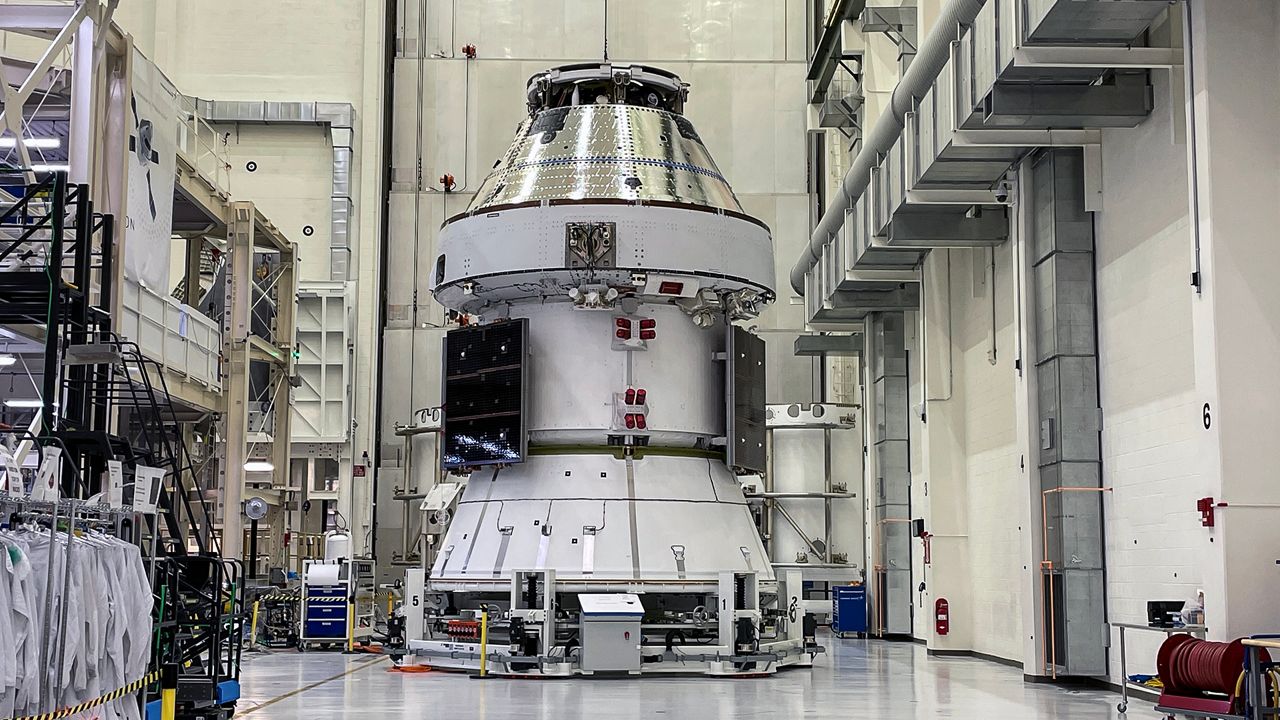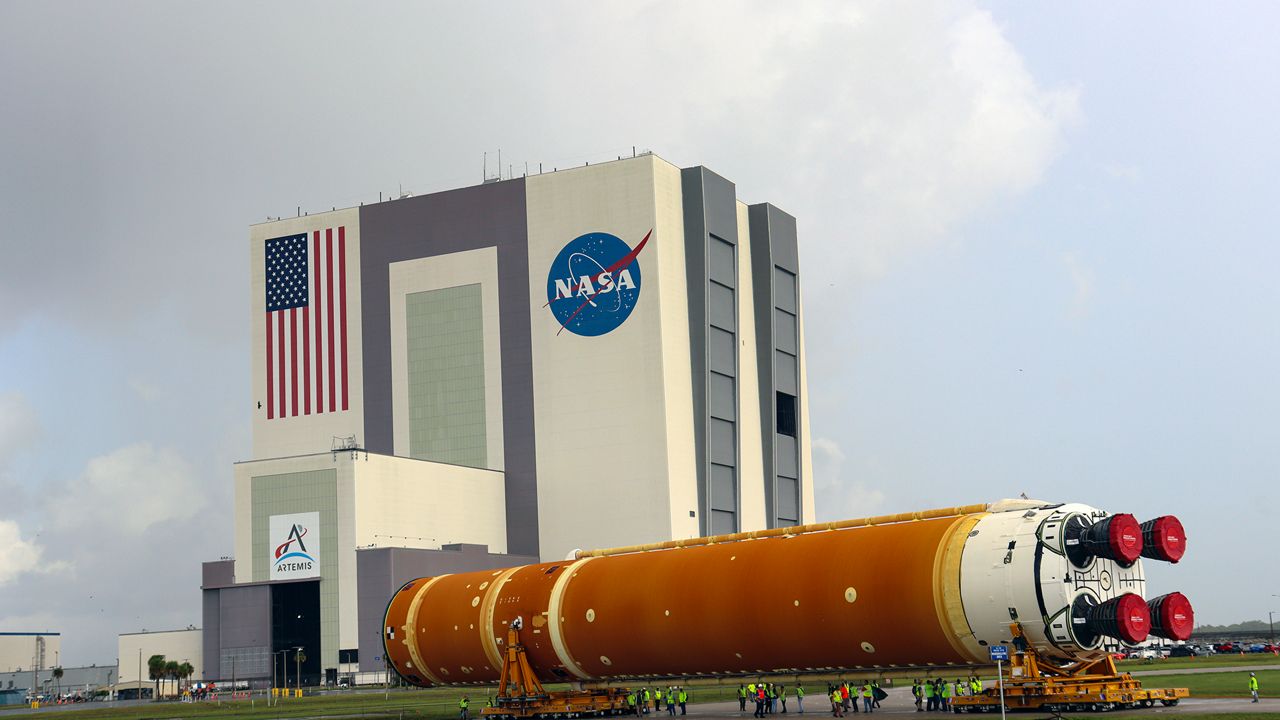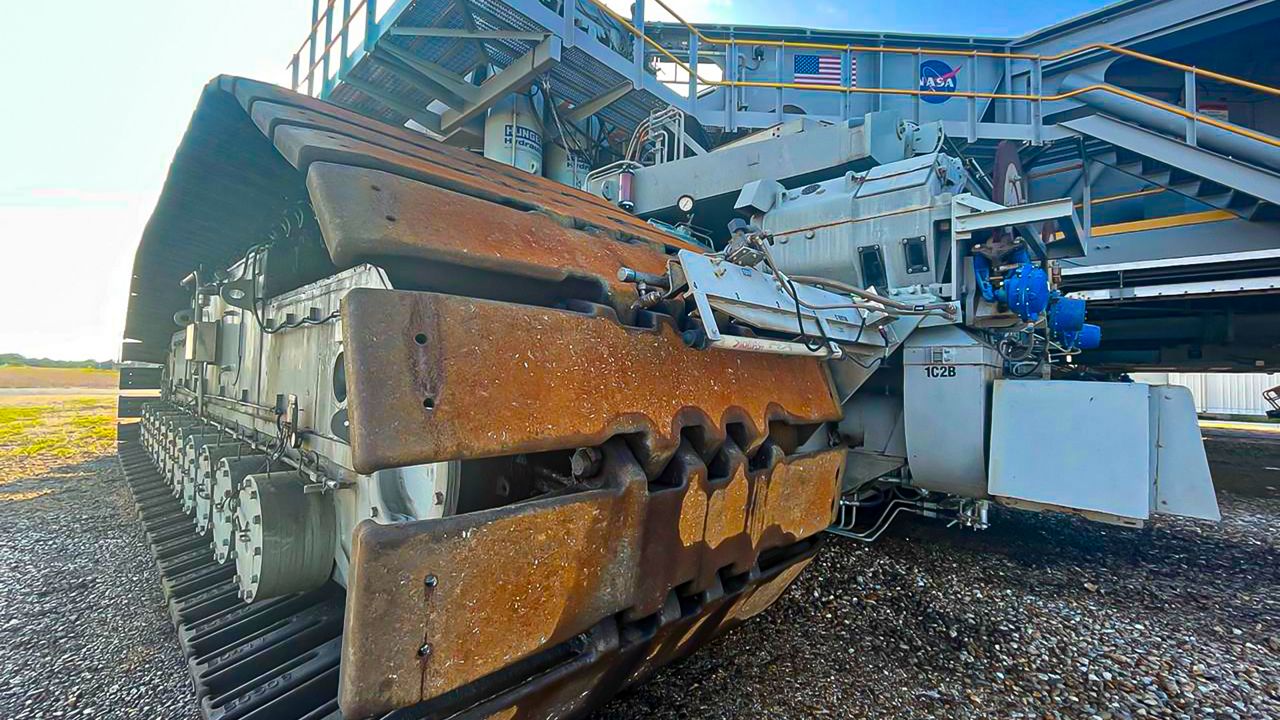KENNEDY SPACE CENTER — Strong wind gusts from Tropical Storm Nicole have caused concerns for the safety of the Artemis moon rocket.
What You Need To Know
- Artemis can withstand 85-mph gusts of wind; wind gusts from Nicole has been confirmed at 89-mph
- The Artemis I mission to orbit the moon has been moved to Nov. 16 at the earliest
- After three previous failed attempts, this is the fourth time the Artemis I launch date has been moved
The thrice-delayed Artemis I mission experienced yet another setback as Tropical Storm Nicole forced NASA officials on Tuesday to push the launch to Nov. 16, at the earliest, as strong winds become a concern for the moon rocket.
The Space Launch System rocket and Orion spacecraft were moved from the Vehicle Assembly Building (VAB) to the launchpad over the weekend and will stay there to ride out the storm, the statement from NASA said.
However, how the rocket can weather Nicole has become a concern.
"The SLS rocket is designed to withstand 85 mph (74.4 knot) winds at the 60-foot level with structural margin," NASA said in a statement on Tuesday. "Current forecasts predict the greatest risks at the pad are high winds that are not expected to exceed the SLS design. The rocket is designed to withstand heavy rains at the launch pad and the spacecraft hatches have been secured to prevent water intrusion."
However, during the storm early Thursday morning, wind gusts of 100 mph were recorded by the National Weather Service for Launch Pad 39B, but it is unclear if the Artemis moon rocket was damaged by the wind or any possible debris flying around.
Remember when I mentioned that @NASA stated the @NASAArtemis can withstand 85-mph winds?
— Anthony Leone (@AnthonyLeone) November 10, 2022
My good friend @w_robinsonsmith pointed out that Launch Pad 39B (home to the @NASA_SLS and @NASA_Orion) saw the wind speed at 89 mph. #NASA #Artemis https://t.co/KgCwMvhogH pic.twitter.com/M5LAYYX49Z
Spectrum News 13 Chief Meteorologist Bryan Karrick confirmed with the National Weather Service of the speed of the wind gusts at Launch Pad 39B.
Our Chief Met @BKarrickWX confirmed with @NWS that the 89 mph wind gusts seen at LC-39B were registered 200 feet up on a tower at the pad. @NASA_SLS is 321 ft. tall. And again, NASA rated the rocket to withstand 85 mph winds at the 60 ft. level “with structural margin.” @MyNews13 https://t.co/Hr7jpOU192
— Will Robinson-Smith (@w_robinsonsmith) November 10, 2022
Spectrum News 13 reached out to NASA for comment on the condition of the rocket, but the space agency has not yet replied.
Meanwhile, the new liftoff date is Wednesday, Nov. 16. It had been scheduled for Monday at 12:07 a.m. EST.
In the statement, NASA officials said the change of date was made to "allow the workforce to tend to the needs of their families and homes, and provide sufficient logistical time to get back into launch status following the storm."
"In preparation for the storm, teams have powered down the Orion spacecraft, SLS core stage, interim cryogenic propulsion stage, and boosters," the statement continued. "Engineers have also installed a hard cover over the launch abort system window, retracted and secured the crew access arm on the mobile launcher and configured the settings for the environmental control system on the spacecraft and rocket elements. Teams also are securing nearby hardware and performing walkdowns for potential debris in the area."
The two-hour launch window on Nov. 16 opens at 1:04 a.m. EST and would result in a return splashdown on Dec. 11.
If needed, NASA officials said there is a backup launch opportunity on Nov. 19.
Previous launch attempts
The Artemis I mission has been having a hard time getting off the ground, and of the three previous attempts, liquid hydrogen leaks were the main cause.
And weather has been another issue for the Artemis mission in the past, since it was Hurricane Ian that scrubbed the third launch attempt back in September.
But since the rocket and space capsule have been back in the VAB due to the storm, Cliff Lanham, NASA’s senior vehicle operations manager at the Exploration Ground Systems Program, said that both vehicles are still ready for the mission.
While in the VAB, engineers performed minor repairs on the vehicles, performed maintenance and replaced various components and equipment, NASA stated.
Lanham echoed the vehicles' status and added that work has gone smoothly — the Orion batteries have been recharged and the secondary payload batteries have either been recharged or replaced, depending on what was required for each one, he said.
He also said that the core stage flight termination system batteries were replaced, and added that the flight team is confident in the launch.
“Our launch team has been preparing for the next attempt and actually went through a full simulation launch,” Lanham said.
In addition, 10 CubeSats (small satellites) will be on board the Artemis I, — five of their batteries have been recharged, but Lanham said that while the rest may need a recharge, they could not be reached by ground equipment.
During a question-and-answer session, many members of the media asked why the launch has to be at night, but, NASA officials explained why that is not an issue.
“We don’t see it as a barrier to getting the data that we need in this launch period," Exploration Systems Development Mission Directorate’s Associate Administrator Jim Free said. "We’re limited by the days. We can launch based on the requirements that are put on us. In the end, we’re comfortable launching at night and we feel like we’re going to get the imagery that we need."
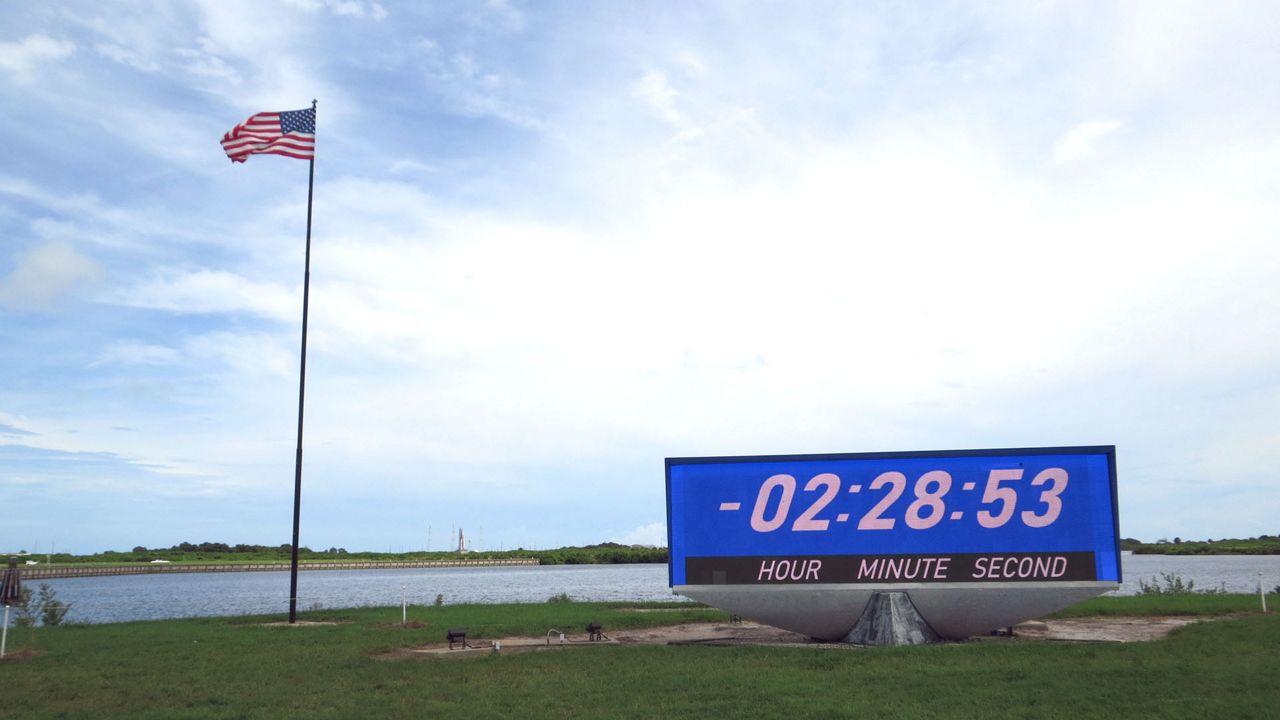
Getting off the ground
NASA has not had much luck as engineers have worked hard to send the Space Launch System rocket and the Orion capsule off to the great beyond.
The first launch attempt was on Monday, Aug. 29, but a liquid hydrogen leak and engine temperature issues forced engineers to postpone the liftoff.
After those issues were resolved, the second attempt on Saturday, Sept. 3, was scrubbed after a different liquid hydrogen leak was discovered.
Engineers at NASA said they replaced two seals and later did a cryogenic demonstration test to see if the replacements to the fuel lines that go from the mobile launcher to the rocket were functioning.
Another liquid hydrogen leak was discovered, but NASA called the test a success since all the objectives were met and engineers were able to manage the leak and fill up the liquid hydrogen side of the rocket.
NASA officials tried for a third attempt on Tuesday, Sept. 27, but Hurricane Ian forced them to roll both the rocket and the spacecraft from Launch Pad 39B at the Kennedy Space Center to the Vehicle Assembly Building. Ian hit the Kennedy Space Center on Thursday, Sept. 29.
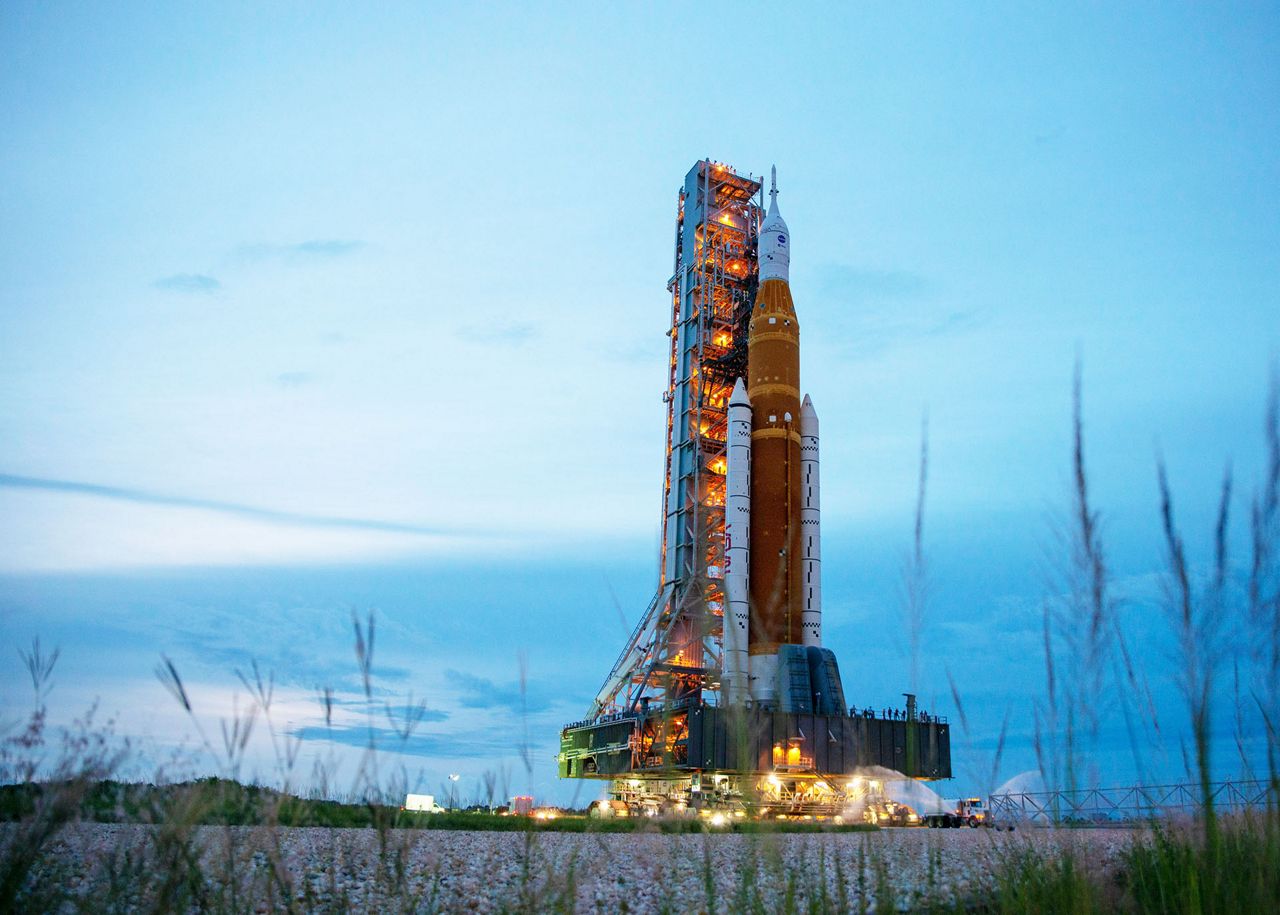
Going back to the pad
On Friday, NASA rolled the rocket and spacecraft back to their temporary home on Launch Pad 39B, starting at 12:01 a.m. EST. The slow crawl back was expected to take between six to 12 hours to make the 4-mile journey.
The Artemis program is composed of a total of three missions: Artemis I, Artemis II and Artemis III.
Artemis I is an uncrewed test flight that is designed to provide NASA with information that will be utilized for the two later missions. Currently, Artemis II, which will carry astronauts in orbit around the moon, is scheduled for 2024.
Artemis III, which will carry humans back to the moon's surface for the first time since the Apollo 17 mission in 1972, is set for 2025.






